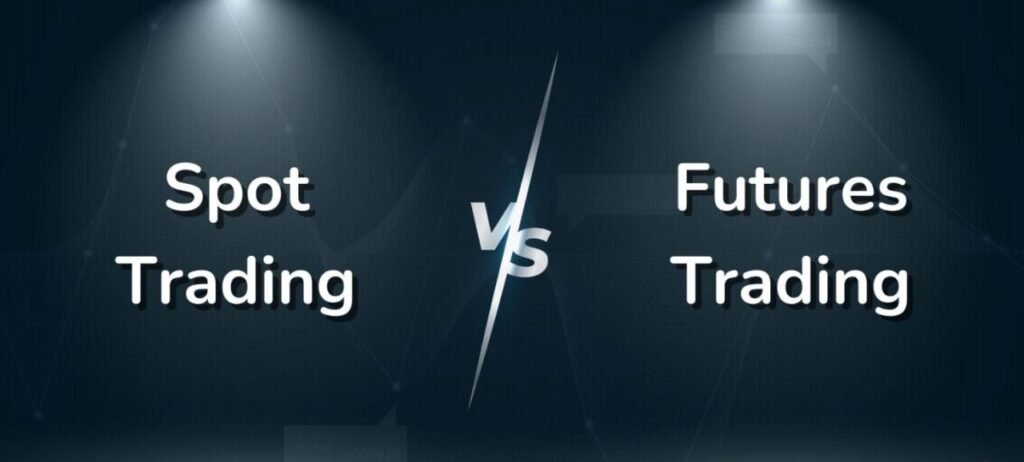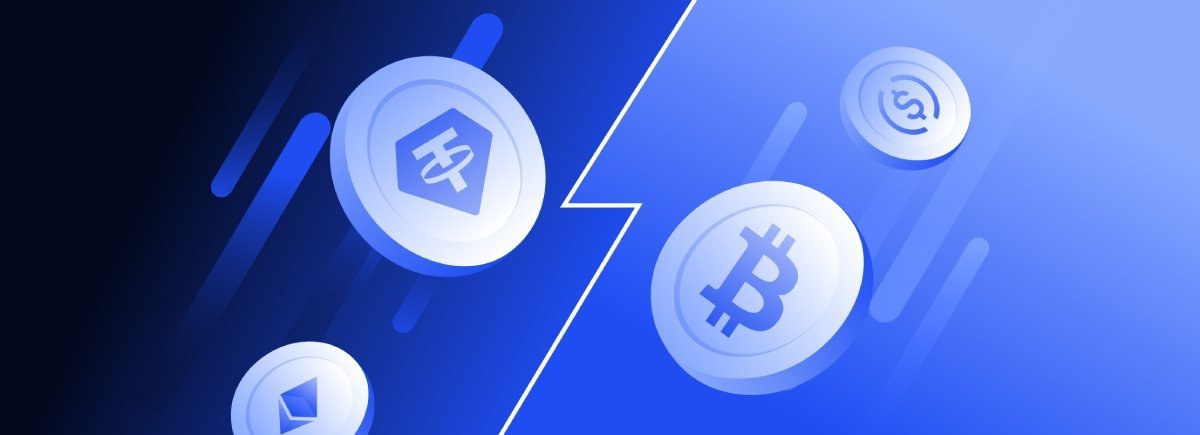The world of cryptocurrency trading is vast and ever-evolving, offering various methods and strategies to maximize profits. Two of the most popular forms of trading in the crypto space are spot trading and futures trading. This blog post will delve into the intricacies of both trading methods, providing you with a comprehensive understanding of how they work, their benefits, and how to get started. By the end of this guide, you’ll have a clear grasp of spot and futures trading and be well-equipped to make informed trading decisions.

What is Spot Trading?
Spot trading involves buying and selling cryptocurrencies for immediate delivery. In other words, when you buy a cryptocurrency on the spot market, you own it instantly. The transaction occurs “on the spot,” hence the name.
How Spot Trading Works
Spot trading is straightforward. You place an order to buy or sell a specific amount of a crypto currency at the current market price. Once the order is matched with a seller or buyer, the transaction is completed, and the cryptocurrency is transferred to your wallet.
Advantages of Spot Trading
- Simplicity: Spot trading is easy to understand and execute, making it ideal for beginners.
- Immediate Ownership: You instantly own the cryptocurrency you purchase, allowing you to use it for other purposes like staking or spending.
- Lower Risk: Spot trading doesn’t involve leverage, reducing the risk of significant losses.
Disadvantages of Spot Trading
- Limited Profit Potential: Without leverage, profit potential is limited to the actual price movement of the cryptocurrency.
- Capital Requirement: You need sufficient capital to buy the cryptocurrency outright.
What is Futures-Trading?
Futures trading involves buying and selling contracts that speculate on the future price of a cryptocurrency. Unlike spot trading, you don’t own the actual cryptocurrency but rather a contract that represents its future value.

How it Works
In futures trading, you enter into a contract to buy or sell a cryptocurrency at a predetermined price at a specific future date. These contracts can be settled in cash or the underlying asset. Futures trading allows for leverage, meaning you can control a larger position with a smaller amount of capital.
Advantages of Futures-Trading
- Leverage: Futures trading allows you to amplify your potential profits by using leverage.
- Hedging: Futures contracts can be used to hedge against price fluctuations, providing a form of risk management.
- Profit in Any Market Condition: You can profit from both rising and falling markets by taking long or short positions.
Disadvantages of Futures-Trading
- Higher Risk: Leverage amplifies both potential profits and losses, making futures trading riskier.
- Complexity: Futures trading involves more complex strategies and requires a deeper understanding of market dynamics.
Spot vs. Futures-Trading: Key Differences
Ownership
- Spot Trading: You own the actual cryptocurrency.
- Futures Trading: You own a contract that represents the future value of the cryptocurrency.
Leverage
- Spot Trading: No leverage is used.
- Futures Trading: Leverage allows for larger positions with smaller capital.
Risk
- Spot Trading: Lower risk due to the absence of leverage.
- Futures Trading: Higher risk due to leverage.
Time Horizon
- Spot Trading: Suitable for long-term investment.
- Futures Trading: Suitable for short-term speculation.

How to Get Started with Spot Trading
Step 1: Choose a Reliable Exchange
Select a reputable cryptocurrency exchange that supports spot trading. Examples include Binance, Coinbase, and Kraken.
Step 2: Create an Account
Sign up for an account on your chosen exchange. Complete the KYC (Know Your Customer) process to verify your identity.
Step 3: Deposit Funds
Deposit fiat currency or cryptocurrency into your exchange account.
Step 4: Place a Trade
Navigate to the spot trading section of the exchange, select the trading pair you want to trade, and place a buy or sell order.
Step 5: Manage Your Portfolio
Monitor your portfolio and make adjustments as needed based on market conditions.
How to Get Started with Futures Trading
Step 1: Choose a Futures Trading Platform
Select a platform that supports futures trading, such as Binance Futures, BitMEX, or Bybit.
Step 2: Create an Account
Sign up for an account on your chosen platform and complete the KYC process.
Step 3: Deposit Funds
Deposit funds into your futures trading account. Ensure you understand the platform’s margin requirements.
Step 4: Understand Leverage and Margin
Familiarize yourself with leverage and margin requirements. Start with lower leverage to minimize risk.
Step 5: Place a Trade
Navigate to the futures trading section, select the contract you want to trade, and place a long or short order based on your market analysis.
Step 6: Monitor and Adjust
Continuously monitor your positions and adjust your strategy as needed. Use stop-loss orders to manage risk.
Strategies for Spot Trading
Buy and Hold

The buy and hold strategy involves purchasing a cryptocurrency and holding it for an extended period, regardless of market fluctuations. This strategy is based on the belief that the cryptocurrency’s value will increase over time.
Dollar-Cost Averaging (DCA)
DCA involves regularly buying a fixed amount of cryptocurrency, regardless of its price. This strategy reduces the impact of market volatility and lowers the average purchase price over time.
Swing Trading
Swing trading involves taking advantage of short to medium-term price movements. Traders buy low and sell high within a few days or weeks.
Strategies for Futures Trading
Scalping
Scalping involves making numerous small trades to profit from minor price movements. This strategy requires quick decision-making and a deep understanding of market dynamics.
Trend Following
Trend following involves identifying and trading in the direction of the prevailing market trend. Traders use technical indicators to determine entry and exit points.
Hedging
Hedging involves using futures contracts to offset potential losses in a spot market position. For example, if you own Bitcoin and anticipate a price drop, you can enter a short futures contract to hedge against the decline
FAQ
What is the difference between spot trading and futures trading?
Spot trading involves buying and selling actual cryptocurrencies for immediate delivery, while futures trading involves buying and selling contracts that speculate on the future price of a cryptocurrency.
Is spot trading safer than futures trading?
Spot trading is generally considered safer because it doesn’t involve leverage, reducing the risk of significant losses. Futures trading, on the other hand, involves leverage, which can amplify both profits and losses.
Can I use leverage in spot trading?
No, leverage is not used in spot trading. Leverage is a feature of futures trading, allowing you to control larger positions with smaller capital.
What are the fees for spot and futures trading?
Fees vary by exchange and platform. Spot trading fees are typically lower than futures trading fees, especially when considering the cost of leverage and funding rates in futures trading.
How do I choose between spot and futures trading?
Your choice depends on your risk tolerance, trading experience, and investment goals. Spot trading is suitable for long-term investors and beginners, while futures trading is better suited for experienced traders looking for higher profit potential and willing to take on more risk.
Can I trade both spot and futures on the same platform?
Many cryptocurrency exchanges, such as Binance, offer both spot and futures trading on the same platform. This allows you to diversify your trading strategies and manage your portfolio more efficiently.
1 thought on “Master Spot and Futures Trading 2024: Your Ultimate Comprehensive Guide to Success!”